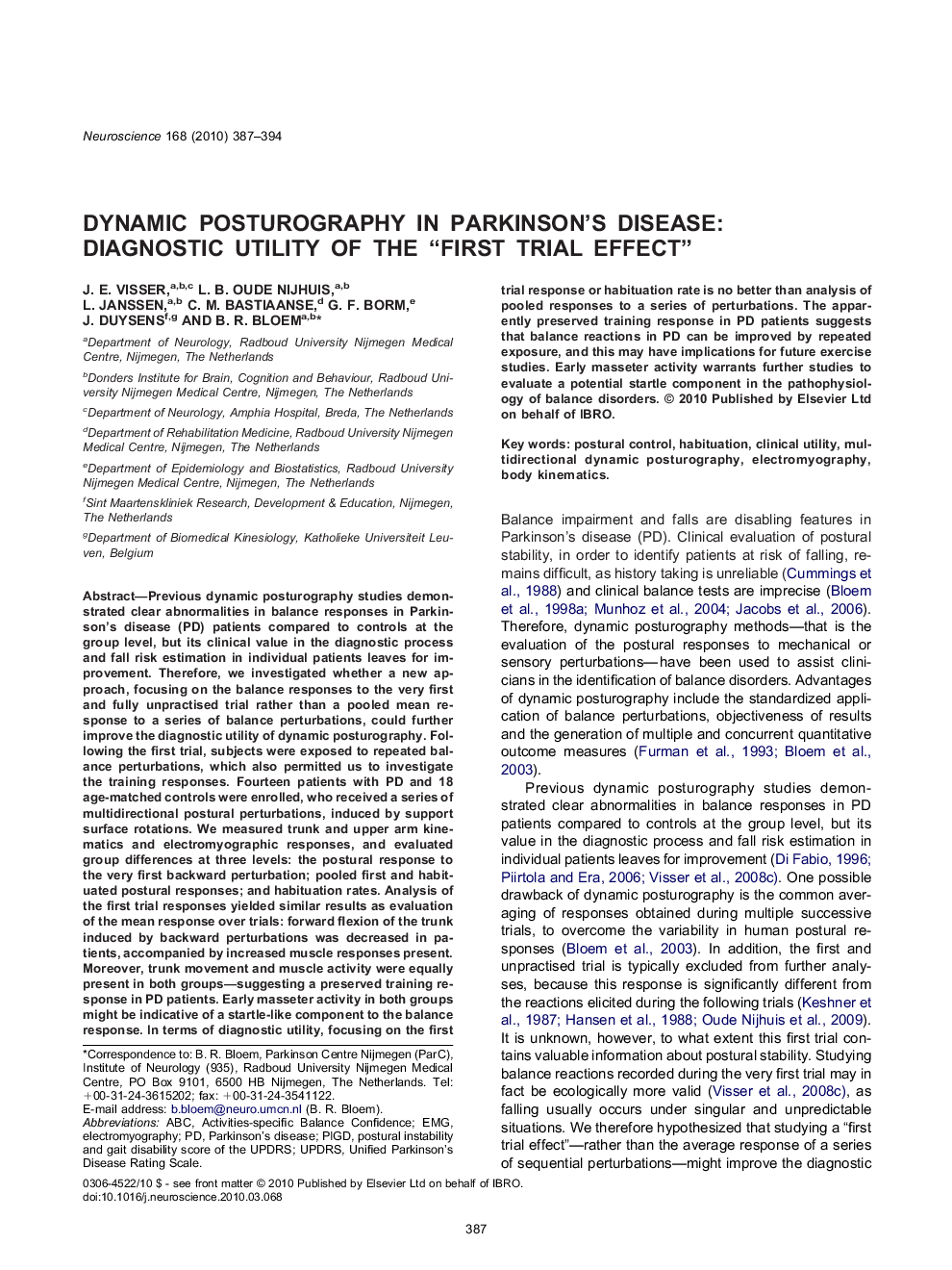| کد مقاله | کد نشریه | سال انتشار | مقاله انگلیسی | نسخه تمام متن |
|---|---|---|---|---|
| 4339325 | 1295750 | 2010 | 8 صفحه PDF | دانلود رایگان |

Previous dynamic posturography studies demonstrated clear abnormalities in balance responses in Parkinson's disease (PD) patients compared to controls at the group level, but its clinical value in the diagnostic process and fall risk estimation in individual patients leaves for improvement. Therefore, we investigated whether a new approach, focusing on the balance responses to the very first and fully unpractised trial rather than a pooled mean response to a series of balance perturbations, could further improve the diagnostic utility of dynamic posturography. Following the first trial, subjects were exposed to repeated balance perturbations, which also permitted us to investigate the training responses. Fourteen patients with PD and 18 age-matched controls were enrolled, who received a series of multidirectional postural perturbations, induced by support surface rotations. We measured trunk and upper arm kinematics and electromyographic responses, and evaluated group differences at three levels: the postural response to the very first backward perturbation; pooled first and habituated postural responses; and habituation rates. Analysis of the first trial responses yielded similar results as evaluation of the mean response over trials: forward flexion of the trunk induced by backward perturbations was decreased in patients, accompanied by increased muscle responses present. Moreover, trunk movement and muscle activity were equally present in both groups—suggesting a preserved training response in PD patients. Early masseter activity in both groups might be indicative of a startle-like component to the balance response. In terms of diagnostic utility, focusing on the first trial response or habituation rate is no better than analysis of pooled responses to a series of perturbations. The apparently preserved training response in PD patients suggests that balance reactions in PD can be improved by repeated exposure, and this may have implications for future exercise studies. Early masseter activity warrants further studies to evaluate a potential startle component in the pathophysiology of balance disorders.
Journal: Neuroscience - Volume 168, Issue 2, 30 June 2010, Pages 387–394